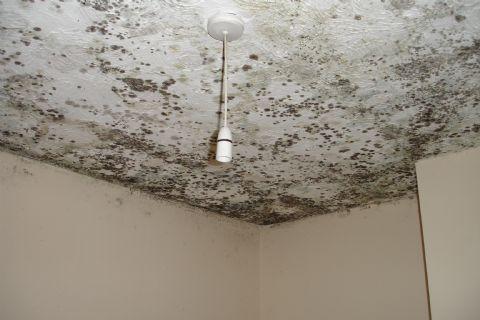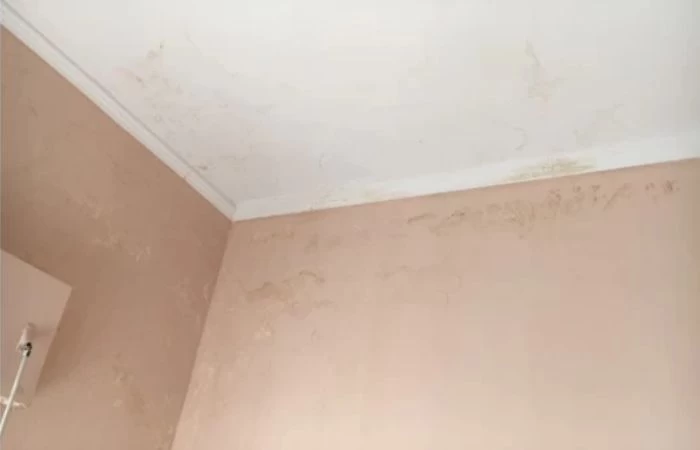A misdiagnosis is made about the origin and reason for the appearance of marks on the ceiling of a house, many times.
The two main sources of problems are, on the one hand, moisture from the outside, which due to failure of the waterproofing penetrates the main body of the insulation and then into the slab of the load-bearing structure. On the other hand, moisture from the inside, which is due to the lack or failure of thermal insulation, which in combination with the internal humidity of the room creates the phenomenon of condensation of water vapour. More specifically:
Moisture ingress from outside (rainwater)

Symptoms:
- Change in surface coloration, by creating sub-yellow spots due to salts carried by water in the process of flowing through the structural elements and concrete slab.
- Detachment of the roughcast (plaster) from the ceiling due to corrosion of the reinforcement and its swelling consequently.
- Appearance of mainly white marks in the form of foam.
- Appearance of brown colour (rust) due to corrosion of the reinforcement (iron) of the ceiling slab.
Causes:
- Surfaces without waterproofing protection.
- Surfaces with waterproofing that have failed either due to poor quality materials, slipshod, or a combination of both.
- Surface with existing insulation that has not been maintained.
- Points of infestation:
- Walls.
- Buildings.
- Roofs.
Treatment:
- Waterproofing of surfaces with adhesive membranes (bitumen - PVC or TPO membranes), or with coating membranes.
- The basic requirement for a desirable result in roof waterproofing is the existence or creation of slopes on the surface.
Find out more about the ways of dealing with this by clicking here.
INTERNAL MOISTURE (surface condensation)

Symptoms:
- Appearance of fungi (black spots) and mold.
- Small pale-yellow spots of very small diameter (1-2cm).
- Small drops as if the ceiling is sweating.
- Black parallel lines (shadows) in case where the thermal insulation has been placed under the concrete slab.
- Unpleasant odours.
Causes:
- Internal production of water vapour (kitchen, bathroom).
- Surface without thermal insulation or insufficient thermal insulation protection.
- Roof with low quality or low thickness thermal insulation in relation to the climatic needs of the area.
- Thermal bridges, e.g., when the continuity of thermal insulation is interrupted due to construction difficulties.
Infection points:
- High points and corners of beams and walls.
- At points of high vapour production (bathrooms, kitchens).
- Unventilated rooms (lofts)
- Building elements with low surface temperature.
Treatment:
- Correct design and implementation of an integrated thermal insulation system for the building facade.
- Ventilation of the rooms.
- Reduction, of water vapour production as far as possible
- Reflective and anti-moisture surface coatings (e.g., INSULADD)
General instructions:
- The use of dehumidifiers to deal with internal dampness is a fairly good but temporary solution.
- Indoor plants are conducive to mould growth, especially if they are watered frequently.
- Bathrooms and kitchens should be adequately ventilated, naturally or mechanically, and doors should be kept closed as far as possible to prevent the dampness from spreading to another room.
- Avoid drying clothes inside the house.
Find out about ways to insulate a roof by clicking here.

